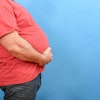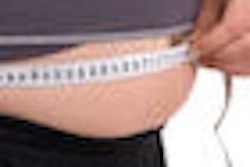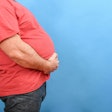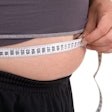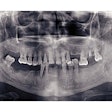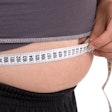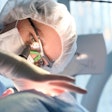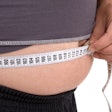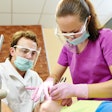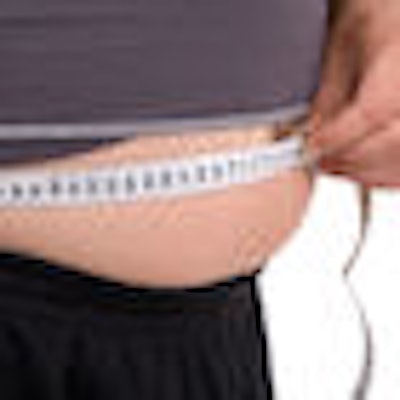
Rates of childhood obesity have increased dramatically in the U.S. over the past few decades. In 1980, 7% of children between the ages of 6 to 11 were obese; that rate reached 20% in 2008, according to the U.S. Centers for Disease Control and Prevention (CDC).
Although a slightly lower rate of 17% existed for those between the ages of 2 and 19 in 2007-2008, according to the National Health and Nutrition Examination Survey (NHANES), it was as high as 29% for certain racial/ethnic groups.
Now a new study in Obesity is shedding light on the role this trend may play in dental practitioners' treatment choices for younger patients (March 8, 2012).
The cross-sectional analysis, which examined the link between obesity and tooth eruption, found that the teeth of obese children erupt earlier than those of non-obese children, with obese children having on average 1.44 more teeth erupted than the former group (p < 0.0001).
The disparity was even greater between the ages of 10 and 11 when obese children had a mean of 2.7 more teeth and a median of six permanent teeth. Additionally, obese children had "significantly greater mean NET (determined by finding the sum of all erupted teeth for each subject, excluding third molars) than non-obese subjects" in every category from ages 7 and up.
"These findings may have clinical importance in the area of dental and orthodontic medicine both in terms of risk for dental caries due to extended length of time exposed in the oral cavity and sequencing, which may increase the likelihood of malocclusions," the study authors wrote.
Implications for clinical practice
While nutritional status and postnatal growth in relation to the timing of a child's primary teeth has been observed, the timing of permanent tooth eruption has been the focus of few studies, the researchers noted. So they set out to shed light on the way teeth erupt in this group of patients.
"We know that the increased presence of adipose tissue that occurs in obese children is a growth-promoting process," lead author Aviva Must, PhD, professor and chair of the Department of Public Health and Community Medicine at Tufts University School of Medicine, told DrBicuspid.com. "This is one of several factors that influence the timing of eruption, and it may have implications for clinical practice."
“[Obesity] is one of several factors that influence the timing of eruption.”
— Aviva Must, PhD, professor at Tufts
University School of Medicine
Certain factors support the hypothesis that obesity played a part in tooth eruption, the researchers wrote -- notably, its link to faster growth and maturation and the association between pubertal timing and growth of the mandible.
To explore this hypothesis further, they examined data from NHANES, an ongoing survey of Americans not in jail or serving in the military, from 2001 through 2006. They gathered information about 5,434 participants between the age of 5 (the minimum age where a dental exam was included) and 14 (the age where mixed dentition ends). Age, race/ethnicity, gender, and poverty-to-income ratio (PIR) served as independent predictors or confounders.
To be classified as obese, subjects had to have a body mass index z-score greater than or equal to the 95th percentile. "Overweight" subjects were between the 85th and 95th percentile. Both were based on the 2000 CDC growth charts.
After statistical analysis, the researchers found several different links between obesity and tooth eruption.
"NET was significantly associated with obesity status (p < 0.0001)," they wrote. In addition, age, gender, and race/ethnicity were significant confounders of the association between obesity and NET when independently examined. Interestingly, the association between PIR and NET in the presence of obesity was insignificant.
Secondary analysis produced results that suggested the same conclusion. "Overweight subjects had 0.52 more teeth erupted on average compared to normal weight subjects, after adjusting for age, gender, and race/ethnicity (p = 0.02)," the study authors wrote. However, obese subjects had 1.55 more teeth erupted than their "normal weight" counterparts (p < 0.0001).
Timing is everything
The correlation between obesity and the timing of tooth eruption can serve as an important consideration for oral healthcare providers, the researchers explained. An awareness of it can help practitioners gauge the risk for caries and malocclusion in their young patients. The timing of treatment can also be better targeted, and the failure to treat problems such as malocclusion, crowding, and impaired oral health early on can be avoided.
Outside of the implications for dentistry, the data increases the understanding of obesity.
"Obesity is recognized as a health risk, and this study adds another piece to the body of evidence of its physical consequences," Dr. Must noted.
Max Goodson, DDS, PhD, a senior staff member at Forsyth Institute who has conducted related research, agreed.
"This is an interesting paper from a group of very competent scientists," he said in an email to DrBicuspid.com. "I would view this as another manifestation of the association of inflammation and obesity."

